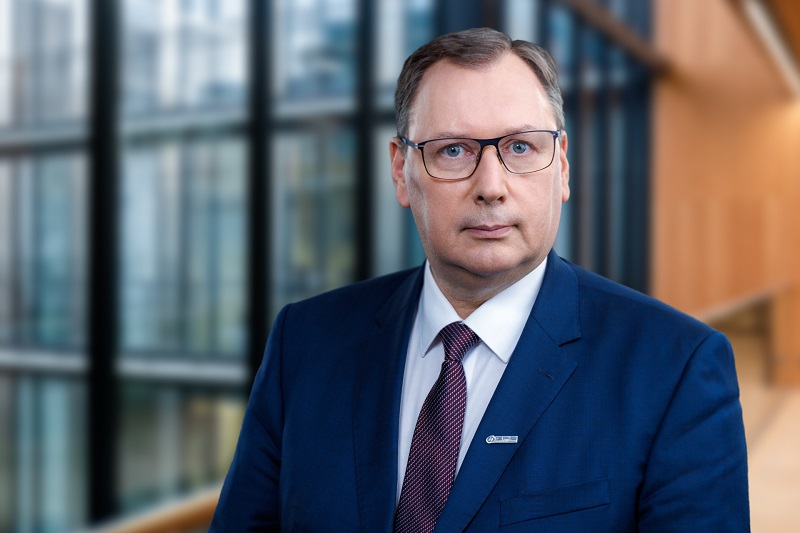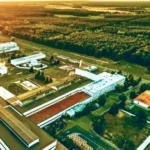„Some technical issues have to be overcome. If they are solved and biomethane can be transferred in accordance with technical standards, then I see no reason why this energy carrier should not go from Danish sources through the Baltic Pipe to Poland,” said Gaz-System Vice President Andrzej Kensbok in an interview with BiznesAlert.pl. We also talked about ammonia in a FSRU and hydrogen in the Baltic.
BiznesAlert.pl: The second LNG terminal will increase Poland’s energy security. Where did the idea of bringing ammonia to it come from?
Andrzej Kensbok: We are aware of the current situation in the world. We are talking to American and Saudi companies, and we are also following investments in Germany. There is currently no clear model for the transport of green hydrogen. One of the options is to convert it into ammonia, which is a stable chemical compound, and then transport it in ships similar to gas carriers.
The maritime trade in ammonia has a 50-year tradition across the world. This chemical compound is bought, sold and processed in many countries, and it is also a key ingredient in the chemical and fertilizer industries.
In contrast, the use of ammonia for energy purposes will require other types of infrastructure, in particular much larger tankers or gas carriers.
It is interesting that the German operator of gas terminals issued a recommendation on designing such facilities so that in the future, with a small investment, a terminal can be adapted for the unloading of energy ammonia.
We want to follow a similar path. We asked our designer what was necessary if we wanted to adapt the infrastructure for ammonia unloading. Of course, at the moment there are no appropriate regulations, protection zones, but we are thinking about the future. If, for example, it turns out that the quay of the terminal is too small because there is not enough space for the expansion of pipelines, then in the future it will be impossible to implement such a project. For this reason, we want to carry out a minimum of work that would allow us in the future to unload ammonia or other carriers of hydrogen and gases, which in a few years will be sources of energy for the economy.
Does the European Union provide subsidies for such purposes?
I’m afraid not. We have submitted the FSRU project, but it concerns natural gas, so it may not be fully covered by the aid instruments. Currently, the European Commission, as part of the Connecting Europe Facility (CEF), has granted a grant to the LNG project in Gdańsk for pre-investment work to obtain a construction permit for the offshore part. The maximum amount of support granted is approx. 19.6 million euros. If possible, we use EU funds, but taking into account the entire portfolio of investments, it does not matter to us which of the projects are financed by such sources as Feniks, CEF or the future REPowerEU. If we are able to increase the company’s balance sheet in one place, the released funds will be redirected to other projects.
Does this mean that in the future natural gas will not be the only gas that will flow via the Baltic Pipe?
This depends on Orlen, which today is our only customer on this pipeline, having 80 percent of the Baltic Pipe’s transmission capacity booked. On the other hand, the Danes’ ambition is to fill their gas grid with biomethane and make it available for wider sale. If it meets the technical parameters and is available at prices comparable to those from Norwegian deposits, then I think that Orlen can consider buying such a mixture and it will be sent via the Baltic Pipe.
In this regard, we agree that mixing biomethane with methane is a good solution. However, there are some technical issues to overcome. If they are solved and biomethane can be transferred in accordance with technical standards, then I see no reason why this energy carrier should not go from Danish sources through the Baltic Pipe to Poland.
Gaz-System has revealed that it will participate in he Nordic-Baltic hydrogen corridor. What is the premise of this venture? Why is Poland interested?
We play a big role in this project. We are the largest operator in this venture, and other countries also recognize our technical competence, implementation capabilities, experience in engineering projects. To begin with, we have agreed that the Lithuanians will select and manage the company that will prepare the feasibility study – the tender for the selection of the contractor is led by Amber Grid, and the preliminary results of the study may be ready by the end of this year.
The assumption is that Poland is the transmission country and Germany the final recipient. When a feasibility study is drafted, it will clearly indicate the course and route of the infrastructure. I assume that it will run close to the largest recipients or producers of gray hydrogen, so that they can become a recipient of green hydrogen in the future.
Why did Gaz-System want to have a representative in Gas Infrastructure Europe? What is the benefit for Poland?
Gas Infrastructure Europe is an organisation that brings together transmission operators, but it is independent. It is funded and controlled by operators and represents their views in front of regulators.
We want to work out some regulations ourselves, we want to have a discussion forum and be able to communicate the findings to regulators, especially those in Brussels and nationally. We will also be able to agree on a message that will be optimal from the point of view of security and greening the economy.
The GIE is a forum for operators who have a realistic approach and must meet all the conditions of safety and economy, so this discussion is more substantive.
Interview by Wojciech Jakóbik









